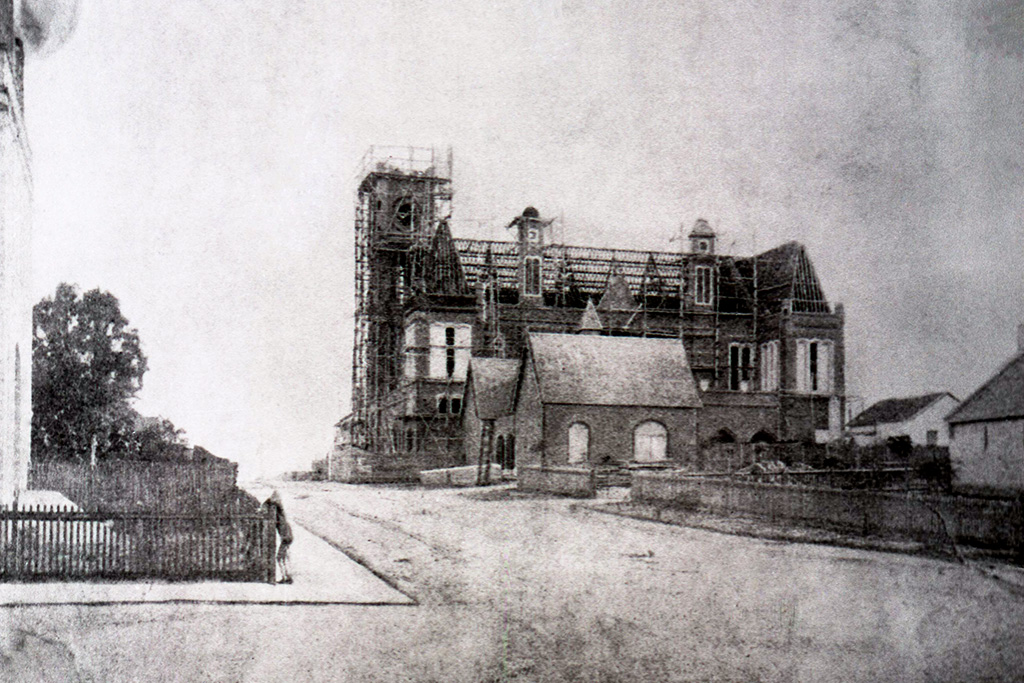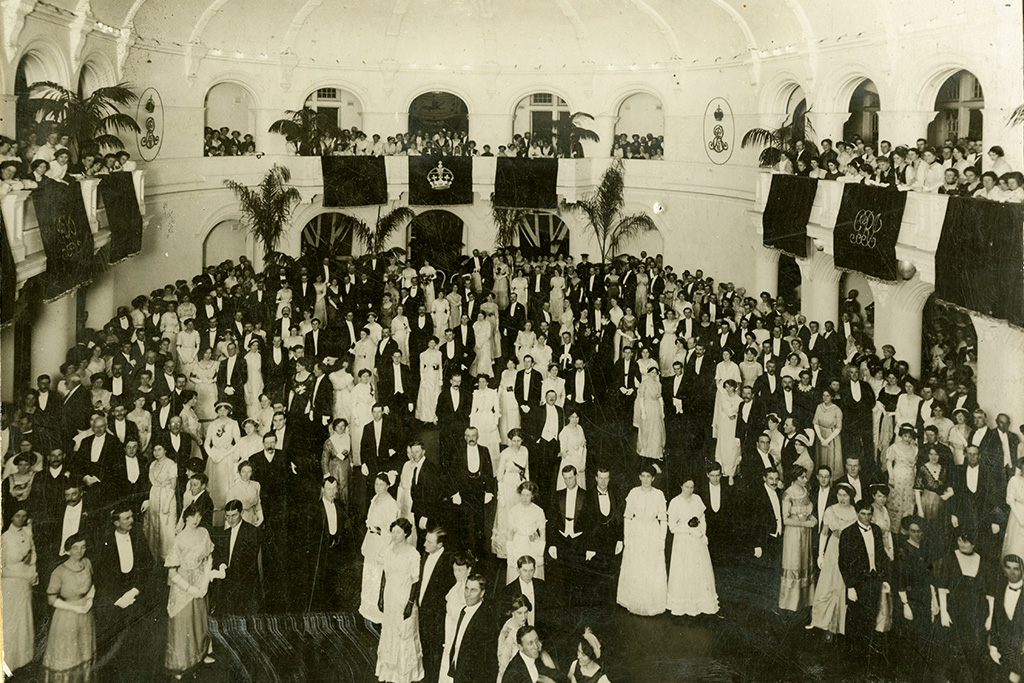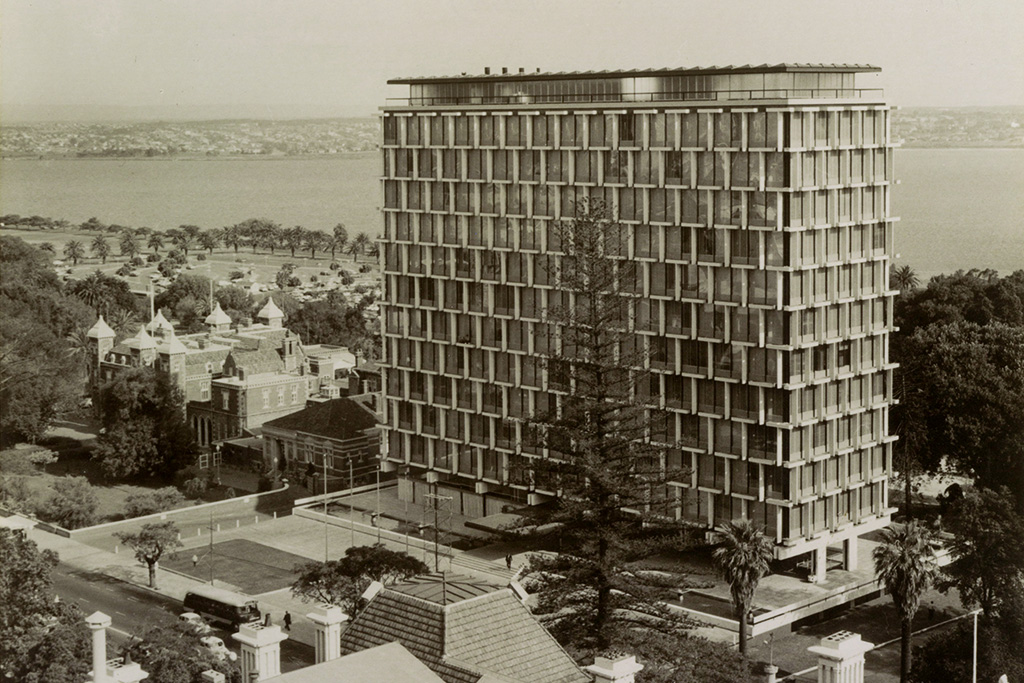
Our History
Perth’s history is simply fascinating; from the convicts and colonies to the boom and bust economy and the reasons why the city sits on the exact site it does, you’ll discover a host of things you didn’t know here…
Whatever your history obsession; whether it’s our indigenous culture, the architecture styles of our buildings or even the men and women behind the businesses and communities that have made Perth the prosperous city it is today, you’ll be sure to find out something great about our state.
See also
-
 Perth Town Hall under construction, 1868.
Perth Town Hall under construction, 1868. -
 Mayoral Ball, Government House Ballroom, 1910.
Mayoral Ball, Government House Ballroom, 1910. -
 Council House completed, 1963.
Council House completed, 1963.
Indigenous history
The Noongar people are the traditional owners of the Perth region and the Swan Coastal Plain in particular.
At the time of colonisation in 1829, Perth Noongar people were composed of four principal groups – Mooro, Beeliar, Beeloo, Weeip – loosely determined by the Swan River (or Derbarl Yerrigan). Mooro country stretched from the Swan River northwards beyond the limits of the current metropolitan area. The main sources of food were the sea, the river and an extensive system of freshwater lakes.
The river is a sacred place for Noongar people and they preserved many stories of the Wagyl, a water-serpent understood to be responsible for the creation and maintenance of the river and most of the water features around Perth. The Noongar moved with the seasons, travelling inland in winter, then returning in late spring to capture game such as wallabies, kangaroos and possums. Their main camp was at what is now Kings Park. They also frequented the mud flats which later became Heirisson Island as it was a productive fishing spot.
The Noongar had contact with various seafaring visitors including the Dutch and the French before the arrival of Captain James Stirling who colonised the region for the British in 1829. Relations between the settlers and the Aboriginals were not always harmonious as the latter were dispossessed of their land and subjected to sometimes harsh and unsympathetic colonial rule. Fast forward to December 2009 when the State Government signed a framework agreement with the representative body, the South West Aboriginal and Land and Sea Council , aimed at resolving through negotiation six Noongar Native Title claims over Perth and the south-west of Western Australia.
You may also be interested in the 'Karla Yarning: Stories of the home fires' self guided walk maps.
European Settlement
The city of Perth has its origins in 1829 when the Swan River Colony was established by the British Government. The area is also home to the Aboriginal Noongar people who have lived in the south-west region of Western Australia for more than 35,000 years. In the city precinct itself, the traditional owners are known as Whadjuk Noongar people.The first colonial Governor, Capt James Stirling, named the new settlement after the Scottish birthplace and parliamentary constituency of the then British Secretary of State for the Colonies, Sir George Murray. When surveying the area previously, Captain Stirling was said to have been stunned by the beauty of the Swan River and the fertile land around it.
Since water transport was vital to communications in the new colony before roads were built, the meanderings of the Swan River determined the site of the first towns. Governor Stirling decided that the site for the colony’s capital would be sited on the river 18km from the sea port of Fremantle. On 12 August 1829 Mrs Helen Dance, wife of the commander of HMS Sulphur, drove an axe into a tree (near the current Perth Town Hall) to mark the colony’s foundation.
The city site was mid-way between the sea and the farming areas of the Upper Swan. However, the early years were difficult financially for the colony and in 1850 it was decided that convict labour would be beneficial in that regard. Between 1850 and 1868 almost 10,000 convicts were transported from Britain. Due to the influx of convicts, many public works were completed during the period from 1856-79, notably the Perth Town Hall. It was not until 1856 that Perth officially gained ‘city’ status when it was declared a Bishop’s See by Queen Victoria.
The first meeting of the Perth City Council was held on 10 December 1858. Rich gold discoveries in the Kalgoorlie region in the early 1890s brought a new era of prosperity for the city and many impressive buildings, some of which still grace the streets to this day. The city also experienced significant population growth. Representative government evolved in Western Australia in the second half of the 19th Century and in 1901 Western Australia federated with the other Australian States to form the Commonwealth of Australia. Perth experienced another mining boom in the 1960s and the wealth it generated could be evidenced by the city’s changing CBD skyline.
Perth became widely known as the City of Lights when U.S. astronaut John Glenn told the world he had seen the city’s lights during his historic orbit around the Earth in February 1962. There was also international attention on Perth later that year when the British Empire and Commonwealth Games were held in the city. Commonwealth leaders from around the world converged on Perth when it was the venue for the successful Commonwealth Heads of Government Meeting (CHOGM) in 28-30 October 2011.


